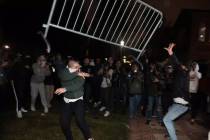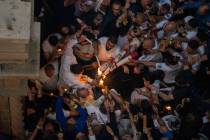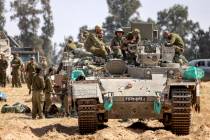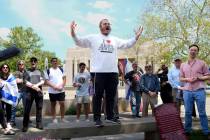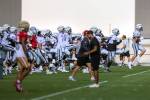Often overlooked, monitoring bone health is key for patients with blood cancer
An aching back is painful and inconvenient for anyone, but for people living with multiple myeloma, an incurable blood cancer, pain in the back and ribs can signal that the cancer has spread to their bones.
Multiple myeloma is the second most common blood cancer in the U.S., with an estimated 70,000 adult Americans living with the disease and another 21,000 new cases expected to be diagnosed in 2012. According to Dr. James Berenson, medical and scientific director at the Institute for Myeloma & Bone Cancer Research in Hollywood, Calif., “Many people with cancer focus on questions about the cancer itself, so they often don’t think to ask how the rest of their body will be affected. This is especially important for people with multiple myeloma, which goes undiagnosed until the disease has spread to the bone in up to 95 percent of cases.”
Once the disease has spread, patients will likely have bone pain in the back or ribs due to bone lesions, or growths that form on the bone, which may cause difficulty walking. Additionally, patients’ bones may easily break or they may experience loss of appetite, nausea, thirst, fatigue, weakness or numbness. Unfortunately, it is often difficult for people to differentiate bone pain from other conditions such as arthritis or ordinary lower back pain, so people with multiple myeloma should also be aware of other signs that could indicate multiple myeloma has spread to the bones. In all, more than 60 percent of people with multiple myeloma will have bone lesions leading to a skeletal-related event, such as pathologic fracture (a fracture which is caused by cancer on or in the bone), radiation or surgery to bone, or spinal cord compression.
People with multiple myeloma who are informed about their disease are often better prepared to talk with their doctor. Dr. Berenson advises that patients be sure to bring up all symptoms with their doctor, even if they seem unrelated to the disease, to ensure a proper diagnosis.
However, it’s important for people to work with their health care provider to ensure they are taking the necessary precautions to manage their bone health.
“A good dialogue between an individual and his or her doctor is a key part of any cancer regimen,” notes Dr. Berenson.
Dr. Berenson suggests patients with cancer, such as multiple myeloma, increase their intake of calcium and vitamin D by adding items like eggs, fatty fish and milk to their diet. Patients should also have their vitamin D levels checked intermittently and dosed appropriately with vitamin D to keep their levels in the proper range. With their doctor’s instruction, patients may also perform strength- and weight-bearing exercises such as walking and climbing stairs to help increase bone strength. Additionally, people living with multiple myeloma should make adjustments to their home and daily activities to improve safety and prevent avoidable falls. These measures include adding grab bars in the bathroom and clearing space for ease of walking between and within rooms in the house.
Advice for talking with a health care provider about bone health and cancer:
* Write down your questions in advance and take notes when you speak with your health care provider.
* Bring someone with you to also listen and take notes.
* If you don’t understand what you are being told, ask your health care provider to explain it again.
* Don’t be afraid to ask questions, even if you think of something the next day. Call the doctor’s office and ask them to provide you with information.
* Decision making is important during all phases of care. If you have any concerns about your care, communicate them.









